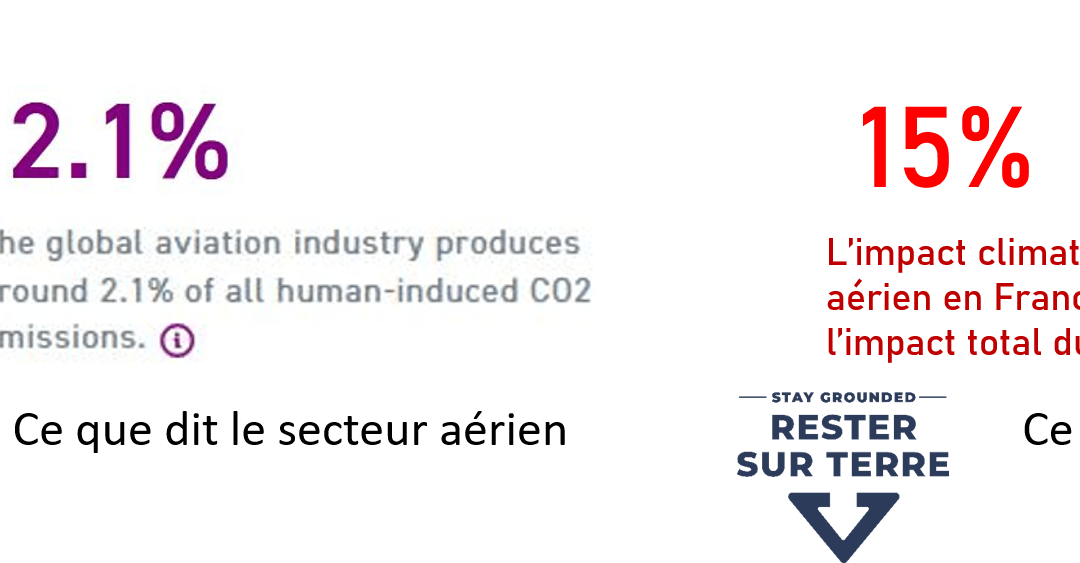Like many other human activities, aircraft emit CO2, however their impact on climate change goes far beyond than just that of CO2. The contrails and nitrogen oxides (NOx) they generate together have about twice the impact of CO2 alone. On the other hand, their short lifespan paves the way for effective strategies to stop the growth of aviation’s impact on the climate swiftly or even to reduce it. This is an advantage over other industries which, even with their ambitious CO2 emission reduction goals, continue to increase greenhouse effect.
As researchers continue to improve their knowledge base on the effects of aircraft contrails and NOx on the climate, a conceptual revolution is underway regarding how to integrate them into a strategy aiming to reduce air travel’s impact on the climate. Unfortunately, this innovative idea remains rather unbeknown and misunderstood by policymakers. Yet, no elaborate mathematical knowledge is needed to understand it! Just imagine someone sleeping in a bed with blankets and a duvet.
CO2: blankets that pile up and cannot be removed
About half of the CO2 emitted accumulates in the atmosphere, as the rest is absorbed by biomass and the oceans. As a result, the concentration of CO2 steadily increases, currently standing at 415 ppm, while the atmosphere’s temperature continues to rise inexorably. Every year, it’s as if a new blanket is layed onto the bed. Our sleeper is getting warmer and warmer, yet they cannot remove any blankets. They know that if the temperature rises above a certain point, their life is in danger: They will not be able to bear many additional blankets.
Scientists have estimated the level of the carbon budget which must not be exceeded in order to limit global heating to 1.5°C, beyond which irreversible natural phenomena of increasing gravity may occur. Fortunately, we are still in time to gradually reduce of CO2 emissions, rather than abruptly stopping them. However the required reduction is significant: about 7% a year, which is roughly equivalent to the effect of a new pandemic every year! And even if we succed at that, global warming will continue its course. As per our example, the blankets will be thinner, but they will continue to pile up.
Non-CO2 impacts: a very thick duvet that could be removed overnight!
As much as CO2 accumulates in the atmosphere and has a life span of around a hundred years, non-CO2 emissions left behind by aircrafts on the other hand do not last nearly as long. Cirrus clouds generated by condensation trails last about a day, while ozone (a derivative of NOx which plays a role in global warming) has a life span of a month. If one hundred thousand planes take flight today and find themselves grounded tomorrow, soon enough only CO2 will remain. The other emissions will disappear due to their short life span. And fortunately so, as those emissions form a very thick duvet. In 2019, it was almost twice as thick as all the CO2 blankets deposited by aircrafts since the beginning of aviation (see note 1).
The more planes there are in the sky, the thicker the duvet becomes, and the rate of traffic growth determines the annual increase in its thickness. If traffic is stable, its thickness will remain unchanged (while at the same time the CO2 blankets will continue to pile up). While if traffic decreases, its thickness will also decrease (the CO2 blankets will continue to pile up, but they will be a little bit thinner!).
Researchers have calculated that with a 2.5% decrease in CO2 emissions, which would bring air traffic in 2050 to 50% of its 2019 level, the annual thinning of the duvet would compensate for the yearly addition of an extra CO2 blanket, thus stabilising the climate impact of air transport at its 2019 level (Klöwer, 2021). Far better than other sectors, which, even with a drastic 7% yearly decrase of their CO2 emissions, would continue to add blankets. It thus appears that the reward for reducing non-CO2 effects would mean the aviation sector would do better than other industries with a lower reduction of its CO2 emissions.
Tackling the duvet to rapidly reduce aviation’s climate impact
We have learnt above that reducing air traffic is very effective since it reduces the duvet’s thickness, whereas measures that only target CO2 emissions without reducing other emissions or at least not sufficiently would be a lot less effective. This would be the case for alternative fuels, biofuels, synthetic fuels or even hydrogen, which would only partially reduce the non-CO2 impacts (Stay Grounded, 2021).
It is also possible to limit contrail formation and reduce NOx emissions. This has not yet been done, due to a lack of incentives, but there are promising solutions out there. The most promising one, the avoidance of areas in which persistent contrail tend to form is currently being tested in the European sky. Other solutions include changing the composition of fuels to avoid the formation of soot during combustion, since the latter are conducive to the formation of contrails, and improving the design of jet engines to limit NOx emissions.
Rethinking how to measure emissions and their climate impact
Unfortunately, no progress will be made unless there is an agreement on how to assess the impact of non-CO2 emissions. The conceptual revolution underway should help in reaching an agreement on the matter, as it puts the assessment on a more stable foundation. Instead of linking the emissions of a flight to the amount of fuel consumed, as we have done until now, we should think in terms of the rate of growth (or decline) in traffic. As we have seen, the non-CO2 effects of air transport are not proportional to the amount of fuel consumed, but to the evolution of consumption on a global scale. Therefore, we should no longer fight for a single, fixed emission factor value, but determine it according to the evolution of traffic volume and the measures implemented to reduce contrails or NOx. For example, the researchers cited above indicate that if CO2 emissions were to increase by 3% per year, those emissions would have to be multiplied by 2.6 to take other emissions into account (Klöwer, 2021). On the other hand, if air transport were to join the climate objectives of the Paris Agreement and begin to decline, it could benefit from a negative emission factor for non-CO2 emissions, which would make it possible to stabilise the aviation’s climate impact. Something to think about!
References
- M Klöwer, MR Allen, DS Lee , SR Proud, L Gallagher and A Skowron (2021)
Quantifying aviation’s contribution to global warming
https://iopscience.iop.org/article/10.1088/1748-9326/ac286e - Lee, D.S., Fahey, D.W., Skowron, A., Allen, M.R., Burkhardt, U., Chen, Q., Doherty, S.J., Freeman, S., Forster, P.M., Fuglestvedt, J., Gettelman, A., De León, R.R., Lim, L.L., Lund, M.T., Millar, R.J., Owen, B., Penner, J.E., Pitari, G., Prather, M.J., Sausen, R., Wilcox, L.J. (2021)
The contribution of global aviation to anthropogenic climate forcing for 2000 to 2018, Atmospheric Environment
https://www.sciencedirect.com/science/article/pii/S1352231020305689?via%3Dihub - Stay Grounded (2020)
It’s about more than just CO2. Aviation must reduce its total impact on climate. - Stay Grounded (2021)
What the aviation industry tells you and what they don’t tell you. What we need to know about decarbonisation promises and false solutions.
Note
- In 2019, the heating caused by air transport was estimated at 4 hundredths of a degree, of which 1.5 was CO2 and 2.5 was everything else! Klöwer et al 2021. Klöwer et al 2021
This article was first published in French : Le transport aérien peut très vite arrêter d’accroître son impact climatique sans attendre un hypothétique avion “vert”




